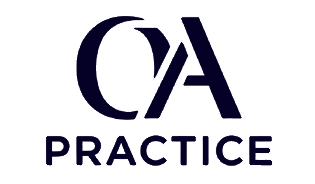D570 Cognitive Psychology - Set 1 - Part 1
Test your knowledge of technical writing concepts with these practice questions. Each question includes detailed explanations to help you understand the correct answers.
Question 1: A researcher observes that participants can better recall words presented visually when they create mental images linking the words together. Which memory enhancement principle does this scenario best demonstrate?
Question 2: When solving a complex problem, you suddenly realize the solution after taking a break from working on it. This phenomenon where stepping away facilitates problem-solving is known as what?
Question 3: A patient with brain damage can form new procedural memories like learning to play piano but cannot remember meeting the instructor yesterday. This selective impairment best illustrates which memory principle?
Question 4: During language comprehension, listeners use the probability of one sound following another to identify word boundaries in continuous speech. This cognitive process is primarily based on what?
Question 5: Broadbent's early selection model proposes that attention filters information at which stage, allowing only selected messages to reach consciousness for further processing?
Question 6: A student remembers their first day of college vividly, including emotions and contextual details. However, they struggle with recalling the capital cities they studied. Which memory distinction does this illustrate?
Question 7: When people judge the likelihood of plane crashes as higher after seeing news coverage of an aviation accident, they are demonstrating which cognitive bias in their reasoning?
Question 8: Gestalt psychologists studying problem-solving emphasized that solutions often come through sudden reorganization of problem elements. What term describes this sudden realization of a solution?
Question 9: In Atkinson and Shiffrin's modal model, what process is essential for transferring information from short-term memory into more permanent long-term storage?
Question 10: A child understands that objects continue to exist even when hidden from view, demonstrating a cognitive milestone. Which researcher is most associated with studying this developmental phenomenon?
Question 11: When witnessing an ambiguous visual stimulus, your brain makes unconscious assumptions about the environment to construct perception. This process reflects which theoretical framework?
Question 12: Research shows that people recall more memories from adolescence and early adulthood than other life periods. What term describes this disproportionate recall of youth memories?
Question 13: During problem-solving, being unable to see beyond the typical use of an object prevents finding creative solutions. Duncker's candle problem specifically demonstrates which cognitive limitation?
Question 14: Baddeley and Hitch's working memory model includes a component that temporarily stores and manipulates visual and spatial information. What is this component called?
Question 15: When solving the Tower of Hanoi puzzle, participants must move disks between pegs following specific rules to reach a goal state. This task exemplifies which problem-solving approach?
Question 16: In dichotic listening experiments, participants can detect their own name in an unattended message, challenging strict filtering models. This finding best supports which attention theory?
Question 17: A person cannot recognize faces despite normal vision and intelligence, requiring them to identify people through voice or clothing. This specific impairment is known as what?
Question 18: According to levels of processing theory, which type of encoding leads to the most durable and effective long-term memory retention?
Question 19: Newell and Simon developed computer programs that simulated human problem-solving, contributing to both artificial intelligence and cognitive psychology. Their work primarily demonstrated what?
Question 20: Cherry's cocktail party effect demonstrates that even in noisy environments, people can focus on one conversation while filtering others. This selective attention ability was studied using what?
Need Guaranteed Results?
Our exam support service guarantees you'll pass your OA on the first attempt. Pay only after you pass!
Get Exam Support